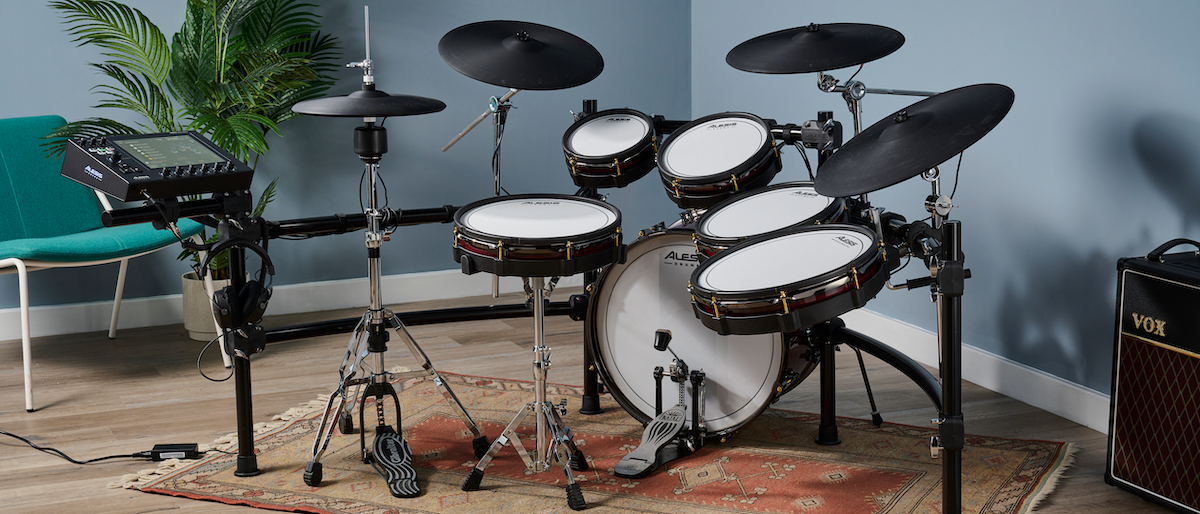
Alesis Strata Prime review: What is it?
Take a look at the electronic drum set market and you’ll realise just how much competition there is out there. And, as we discovered earlier this year with the release of Alesis’ Nitro Max set, this competition is incentive enough for some of the more established brands to work harder in order to get their gear in our shopping carts. Traditionally a slight underdog to Japanese giants Roland and Yamaha, Alesis – a brand that has been involved in electronic and hybrid drum triggering since before the latter phrase was even coined – has emerged over the last decade or so as a serious contender with value-packed kits for less money.
But, while offering similar features at a lower price point is brilliant for us customers, what about innovation? Well, we’re about to find out, because with the Strata Prime, Alesis has quietly devised what could be a game-changer: the power of computer-based sounds housed in a self-contained, mesh-headed electronic drum set.
The whole concept begins with Alesis’ parent brand, InMusic, having acquired the BFD software drum library in 2020. BFD, alongside Toontrack’s then-titled Drumkit From Hell (now Superior Drummer 3), started the boom in computer-based drum libraries 20-odd years ago.
Why is this important? Well, every sound we play from our electronic drum kits is an audio sample; we hit a pad, the module plays back the selected sound at the velocity level of our strike, and we hear it through our speakers or headphones.
But drums can be hit at infinite different levels, each one producing a different sound - a snare drum tapped lightly sounds very different to a hard-hitting rimshot, for example.
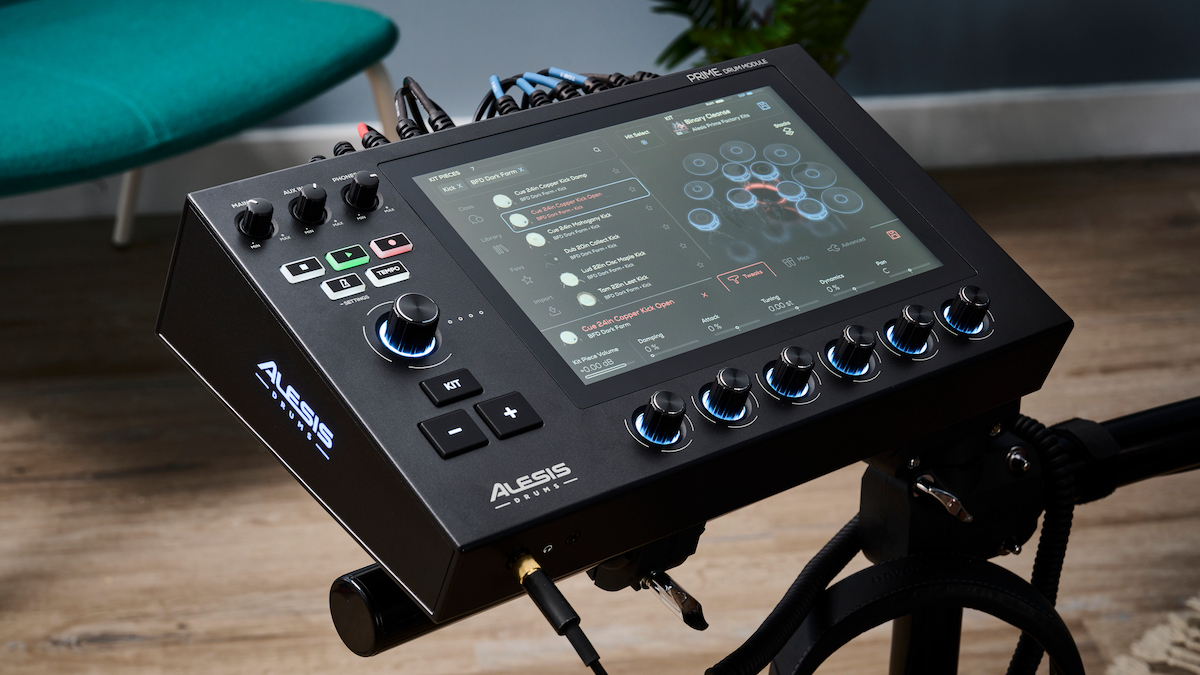
Not only that, but the drum sounds we’re used to hearing on recordings aren’t just coming from one source, the overall sound of a recorded drum kit is made up of many close mics bleeding into each other, overheads, plus room/ambience mics. In short, it’s not just the same sound played quietly or louder.
With these factors in mind, then, it makes sense that in order to have a realistically playable electronic drum kit, we need to be able to recreate the sound of our drums and cymbals played at many different light and harder strikes, as well as having control over the overall balance of the microphones that have captured these sounds.
As you can imagine, this sort of forensic sampling of an acoustic drum kit requires a lot of audio files, and in turn, this requires vast amounts of memory and lightning-fast processing. DW’s recent DWe takes this approach, albeit with sole reliance on a computer.
That’s because drum modules have traditionally been held back by these technological limitations, and the samples housed within are limited to anything from a single one-shot sample to a handful of velocity layers.
It’s this lack of detail which in part causes the famous ‘machine gunning’ effect, where the same sample is triggered repeatedly with no change. But this is 2024, memory and processors are more powerful, and if you own an entire company whose fortune was founded on creating detailed acoustic drum samples, there’s a whole lot of work already done.
Alesis has done just that, and ported its BFD 3 library straight into the Strata Prime drum module, giving us multi-velocity-layered, and multi-mic’d samples of every kit part, captured in pro studios with expensive outboard gear.


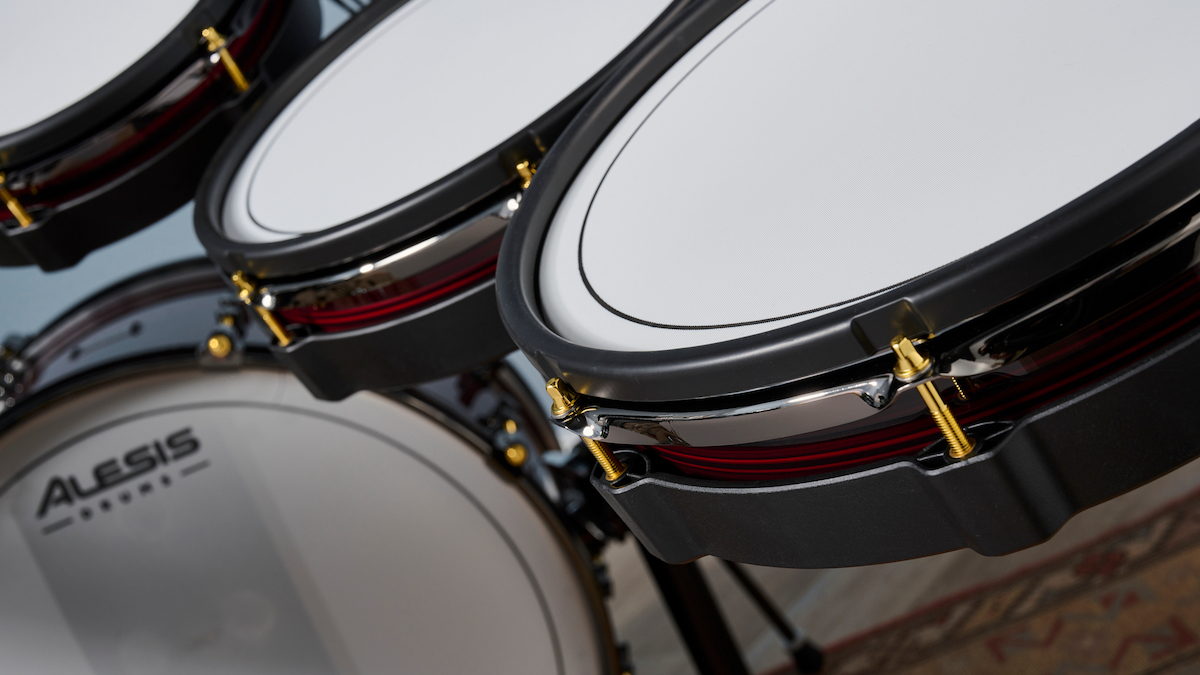
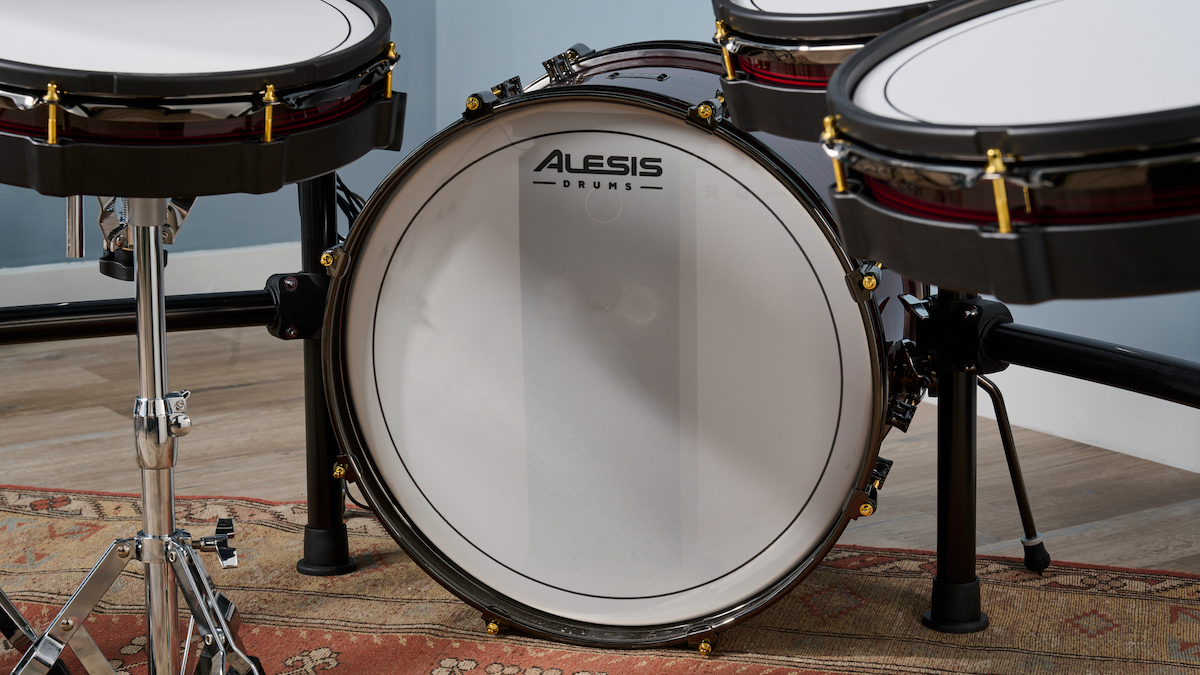
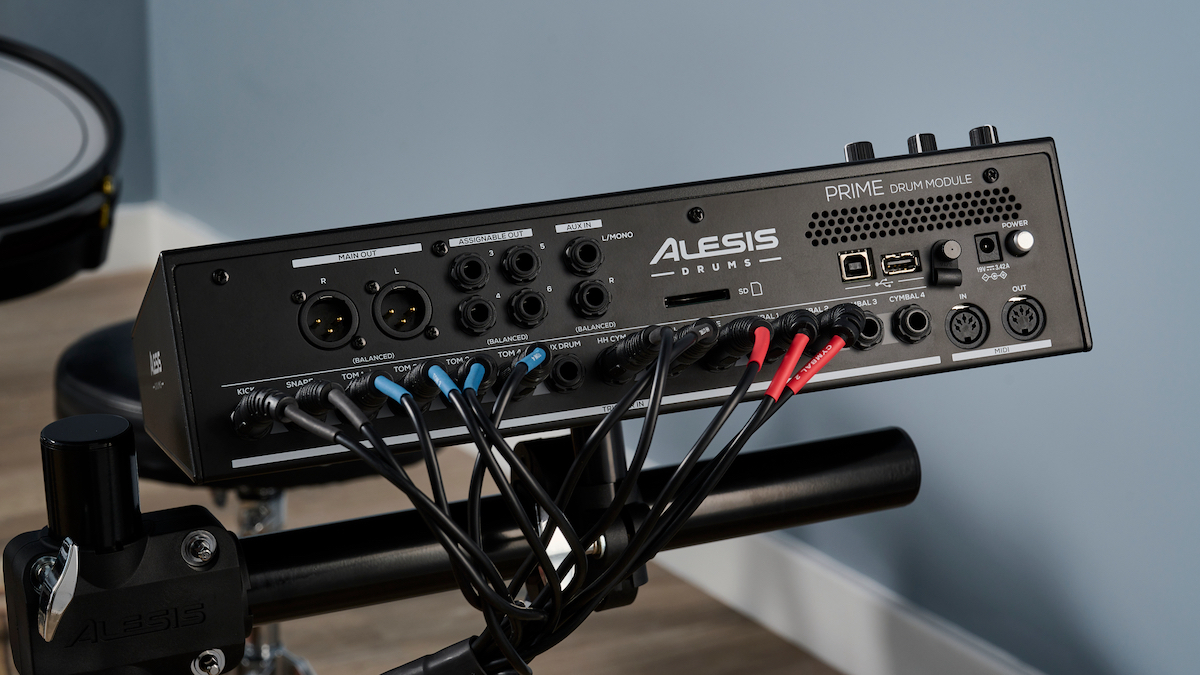
The Strata Prime module forms the nerve centre of the kit, and everything is based around a 10.1” colour touchscreen. Inside, it’s pre-loaded with over 45 GB of sample data (with a 128GB capacity hard drive), arranged into 75 preset kits. There are hardware controls for the master output, headphone outputs and aux-input, as well as a main scroll wheel and six rotary controls for making selections away from the touchscreen.
Around the back, there are 13 trigger inputs, all of which operate on TRS quarter-inch jacks for dual-trigger capability. Outputs include stereo L/R outputs via XLR sockets, plus four direct outputs for routing kit parts to their own dedicated output. MIDI is handled with 5-pin sockets, USB or Bluetooth.
But, the module is only part of the story, because as we’ve grown accustomed to, Alesis has stocked the Strata Prime with mesh headed-pads all round, and they’re configured to faithful acoustic-style diameters with a 20” bass drum, 8”, 10”, 12” and 14” toms and a 14” snare drum pad. Joining these are Alesis’ new ARC cymbals, all of which are triple-zone with a 360-degree playable surface, and once again we don’t have to compromise too much on sizes, with a 14”, single-piece hi-hat, two 16” crash cymbals and an 18” ride all designed to get close to our acoustic cymbal setups in terms of size. The whole lot is fitted to a wide, three-sided rack stand with ABS-stlye heavy duty plastic clamps to lock everything in place.
Alesis Strata Prime review: Performance & verdict
Our kit arrived in two boxes, one containing the bass drum and one with the disassembled rack, pads and module. It comes with a stand for the snare pad, as well as the cymbal boom arms, but you’ll need to source your own hi-hat stand, drum throne and bass drum pedal. Assembly is simple, even if it is tedious, and the size of the rack means you might want to enlist some help to speed things up, but all-in-all, you should be able to get it built in under an hour.
Upon starting up the module, we’re greeted by its beautiful display, and (for the first time we can remember) the Strata asks to connect to the Wi-Fi. This is to handle firmware and library updates, which removes one more reason to go anywhere near a computer. There’s a walkthrough for setting up the hi-hat calibration, and the same can be done to calibrate the crosstalk control between the drum pads using the LearnXTalk feature.
It’s an important step, particularly as everything is mounted to a rack, and vibrations aren’t as isolated. For the most part, this process is set-and-forget, with the exception of perhaps the hi-hat which might require the odd tweak if you change the pedal tension.
The big news here is the module, so we’ll start there. It’s based around a similar GUI to BFD’s main screen, with a kit overview allowing you to select presets, swap drums and cymbals, and fine-tune your sound. Naturally, the excitement lies in the sounds, and we were sceptical right up until the point where we started to play.
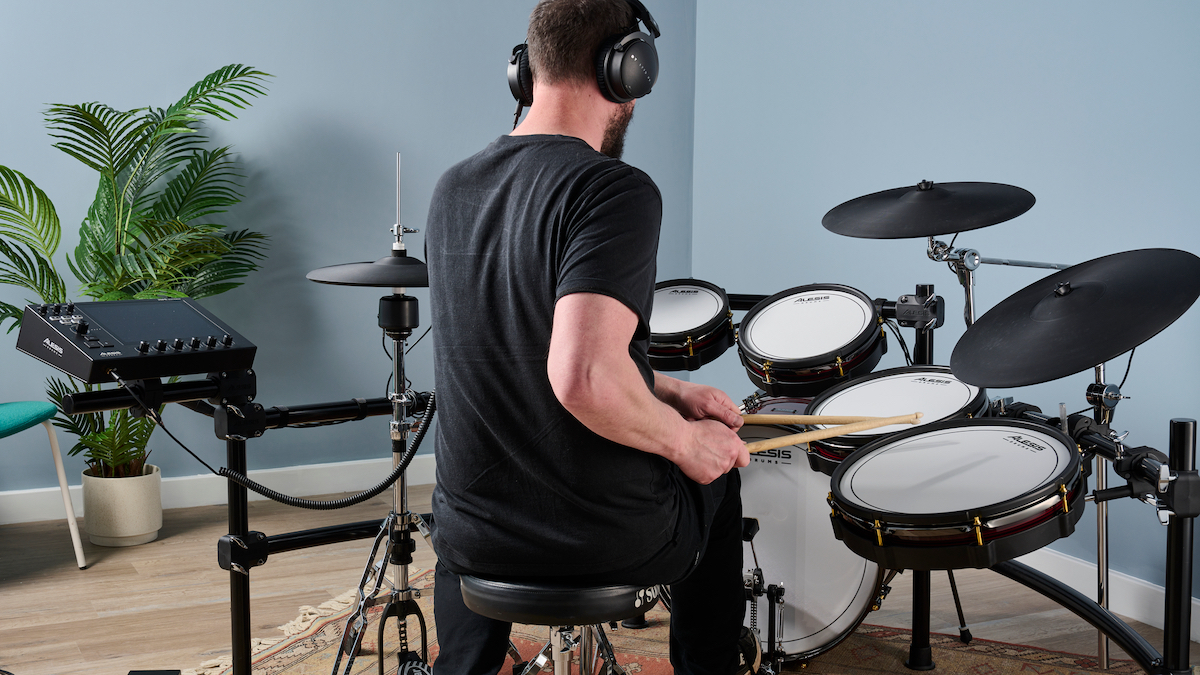
In short, it lives up to its claims, with dynamically layered sounds serving up an experience that’s analogous to the difference between an MP3 and uncompressed audio, or in visual terms, SD to UHD. The Strata Prime responds to our buzz rolls and light taps, all the way up to heavy, rim-shotted backbeats with a pool of samples tailored for the job. At first it’s quite surreal, especially if you’re used to hooking your kit up to a computer in order to get this level of detail.
You can control a lot of parameters from the main kit selection screen, and towards the bottom we get a selection of controls that are assigned to the rotary controllers. These are handy for making finer adjustments, and despite having the touchscreen, we found a combination of both to be intuitive and useful.
The Strata Prime also includes the Stacks feature. This allows you to layer sounds underneath your core selection, in a similar way that modern drum recordings are bolstered by layers of multiple drums. You can choose up to three additional Stacks on a kit piece, so if you want a snare drum that’s full of punch and body, but perhaps lacking in overtones, you can just scroll through, find an additional snare with more ring and blend it in. All the while maintaining the fluid dynamic response that makes the Strata so appealing in the first place.
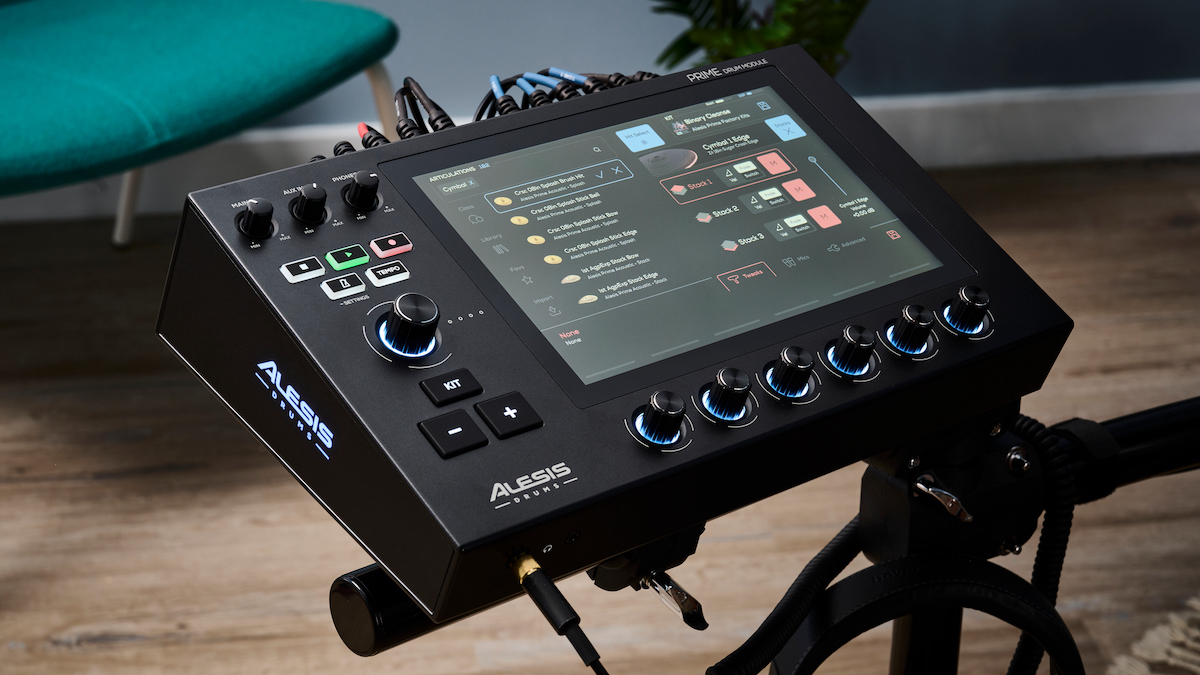
It’s also great for creating convenient layers - a snare with a handclap or tambourine, an acoustic bass drum with an electronic sub-bass, the possibilities are only limited by the sounds you have to hand. Speaking of which, if you can’t find a suitable sound within the module’s massive selection, you can also import your own via the SD card.
The Strata Prime is capable of importing .wav files, but it can also work with files exported from BFD too, and the remaining 80GB of hard drive space gives us a lot to work with.
Navigating your way around the module is easy thanks to that touchscreen, but it will take you a short while to remember the infrastructure. From the mixer screen, you can blend your close, overhead and room mic levels, as well as applying effects (up to three per-channel) and assigning channels to the respective outputs. In use, we found that between the main screen and mixer display, you’re unlikely to have to spend a lot of time delving around elsewhere, unless you’re making utility/settings type adjustments to things like the dynamic response of the pads.
Which brings us to the other half of the story, the bits we actually hit! The Strata Prime’s pads are somewhere between what we’re used to seeing on the Strike Pro and the more recent Nitro Max, with the toms and snare taking on a less shell-like appearance, but with more depth than a simple drum pad. The mesh heads are sturdy, and neatly pinstriped throughout, meanwhile the tuning lugs are gold plated, which, while joining the ruby red wrap to create a head-turning look, might not be to everyone’s taste.
However, it’s the sizing and configuration that really stands out. The 8” pad is a great addition rather than having to be the starting point for our toms (although it definitely works well as a first rack tom with a suitable sound selected). What we really get is some flexibility - set it up as your first rack tom and you’ve got a cool extended tom set, or alternatively, move it to the other side of your hi-hat and it can be an auxiliary snare drum or effects pad, without losing a traditional three-tom setup. The same can be said of the floor tom placement - particularly if you feel like a 12” pad is too small to act as a first floor tom. The pads stayed pretty solid throughout our time with the kit, although we did find ourselves having to tighten up the largest floor tom every now and then. It’s relatively heavy, and being hung from a rack does mean that there’s a fair amount of leverage when hitting it. But, tighten it up properly and you shouldn’t have any real concerns.
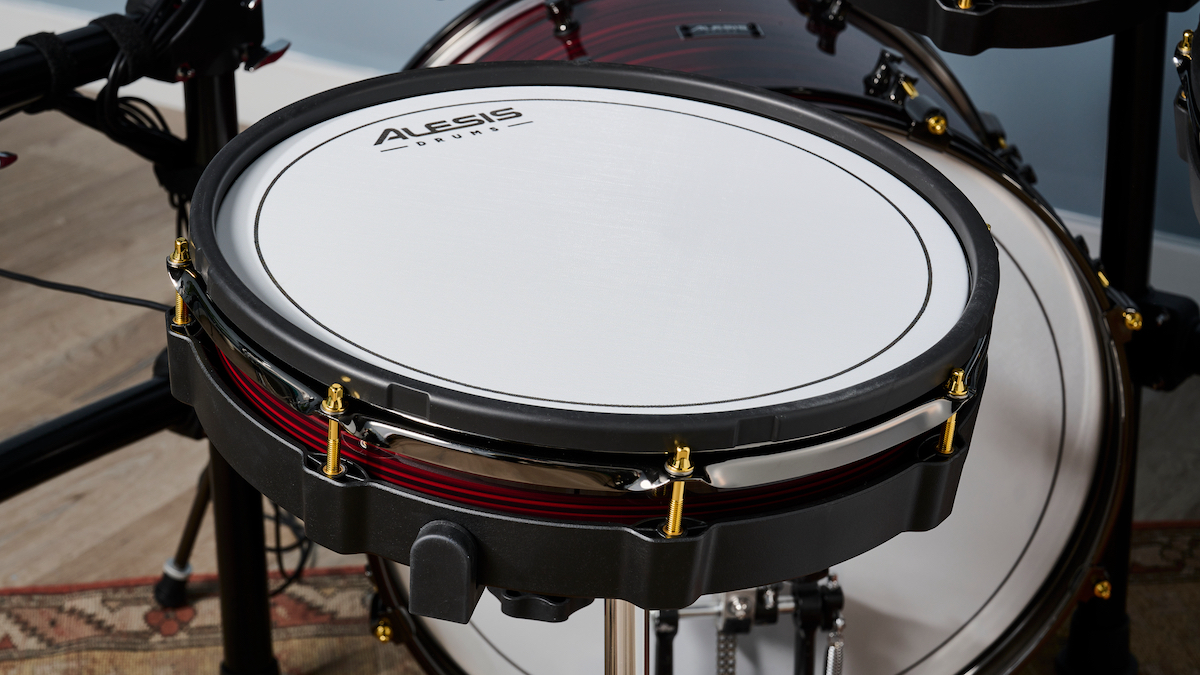
The snare drum pad is really good, with the 14” sizing not only faithful to most peoples’ go-to snare size, but it matches the largest tom, rather than dwarfing it. We’ve said a similar thing about ‘shell’ based kits before, and while the Strata Prime pads don’t have the depth limitations of a full-shell setup, the diameters mean that you’re likely to space everything out more naturally. It’s almost subliminal, but it really does make a difference to the way you play, forcing a more realistic movement around the kit and making everything feel that much more ‘real’.
It’s here though, that we find our first major gripe with the Strata Prime. The snare drum has two zones - the head and rim. That means we can play centre-of-head sounds, the rim on its own or a rimshot. Of course, a cross-stick is also a major articulation of any snare drum, and the Strata Prime can do that too. Except in order to execute it, you have to tell the module whether you want the rim to create a rim sound, or cross-stick - it can’t do both autonomously. Selecting cross-stick means that you can play the rim from your standard grip (like you’re hitting the drum), which as we all know, isn’t very realistic.
If you anchor your hand and the stick on the drum head while you play a cross-stick, the Strata Prime registers it as a rimshot. We found that laying the stick across the width of the pad, with both ends touching the rim either side allowed us to at least play a cross-stick from a more natural (but still a bit awkward) hand position. It’s not a big enough issue to make us discount the Strata Prime, but with so much thought put into realistic reproduction of drum sounds, combined with the lack of positional sensing found on kits such as the Roland TD-27, it seems a little bit of an oversight.

Next are the cymbals, which are frankly, excellent. Once again, the sizes prescribed by Alesis add to the realism. The ARC, isn’t just a marketing acronym (Alesis Rotatable Cymbal, if you’re wondering). Each one has a 360-degree playing surface, and is chokeable. To the edge, there’s a distinct curve, which makes it feel less like you’re hitting a rigid slab of rubber, particularly when crashing. While there’s weight to them, they move freely with swing and stick bounce all feeling very natural.
The hi-hat pad sits on a plinth type sensor unit, but unlike the traditional sensing we’re used to, it uses magnets - in what Alesis says is a world-first - to determine the open/closed positioning. Hi-hats are one of the most difficult parts to get right when it comes to electronic cymbals, mainly because the mechanical nature means that there are so many interactive sounds available at any given moment. Roland’s VH-14D are no doubt the most impressive we’ve tried, but, if you’ll allow us a pun, we’re going to say ‘Hats off!’ to Alesis. The 14” diameter combined with the fluid response make these a lot of fun to play. It’s here though that we’ll reiterate the importance of making sure your hi-hat stand is set comfortably, and that you’ve calibrated the hi-hat in the module. There are too many variables at play (preference, hi-hat stand tension/clutch height, playing style etc.) for it to just have a guess straight out of the box, and this really applies to electronic hi-hats from any brand. Spend a few minutes dialing it in, and the reward is smooth timekeeping.
We’re going to dedicate the final word of our appraisal to an elephant that’s yet to enter the room: Bluetooth. If you’ve already seen our First Look at the Alesis Strata Prime (see the video above), you’ll know that it has Bluetooth, and as we mentioned earlier, it can be used to transmit MIDI wirelessly, but not audio. At least not yet…
Alesis tells us that Bluetooth audio is on the cards and in the plans for a future firmware update, so we don’t expect potential users to wait too long for this to become a reality. For now though, you can easily jam with your music collection via a cabled connection.
Alesis Strata Prime review: Conclusion

The Alesis Strata Prime currently occupies a unique space in the electronic drum world. First is that stellar BFD sound set, which in our opinion really does open up the possibilities of using an electronic kit in a live situation. Yes, you can already do this if you’re prepared to take a laptop, and possibly a multi-channel audio interface to a gig. Pearl’s Steven Slate Drums-equipped MIMIC module is the next-closest rival, but it needs to be paired with pads or triggers. Here, it’s all self-contained with pads and cymbals designed to play nicely with the module.
At times, it does seem like the Strata Prime is straddling the worlds of home practice and professional use, features such as the two-zone snare and delayed Bluetooth come across as a bit indecisive as to who the target user is, but these are minor niggles rather than real problems and we’re assured the latter will change shortly.
We’d love to see Alesis produce a ‘stage’ version of the Strata Prime with real drum shells for a more traditional acoustic look, removing the need to haul a rack.
Ultimately, though, the Strata Prime is incredibly impressive. It’s common for gear brands to make hyperbolic claims, only to find they’re talking hyper-bollocks. In this case, we’re looking at a bonafide game-changer that, as we approach the midpoint of the year, has its hands firmly on the Best New Electronic Drum set of 2024 chalice.
Alesis Strata Prime review: Hands-on demos
66Samus
Adam Tuminaro
Guitar Center
Alesis Strata Prime review: Specification
- Module: Alesis Strata Prime with BFD 3 sound set
- Pads: 20” ‘shell’ bass drum (single-zone), 14” snare drum (dual-zone), 8”, 10”, 12”, 14” toms (dual-zone)
- Cymbals: ARC cymbal pads - 14” hi-hat (one-piece w/magnetic sensor), 16” crashes x2, 18” ride cymbal
- Hardware: Alesis aluminium rack w/ABS clamps, cymbal boom arms, snare stand, module clamp
- Features: 10.1” touchscreen, 128GB hard drive, Bluetooth MIDI (audio planned for future), USB-C MIDI interface
- Contact: Alesis







